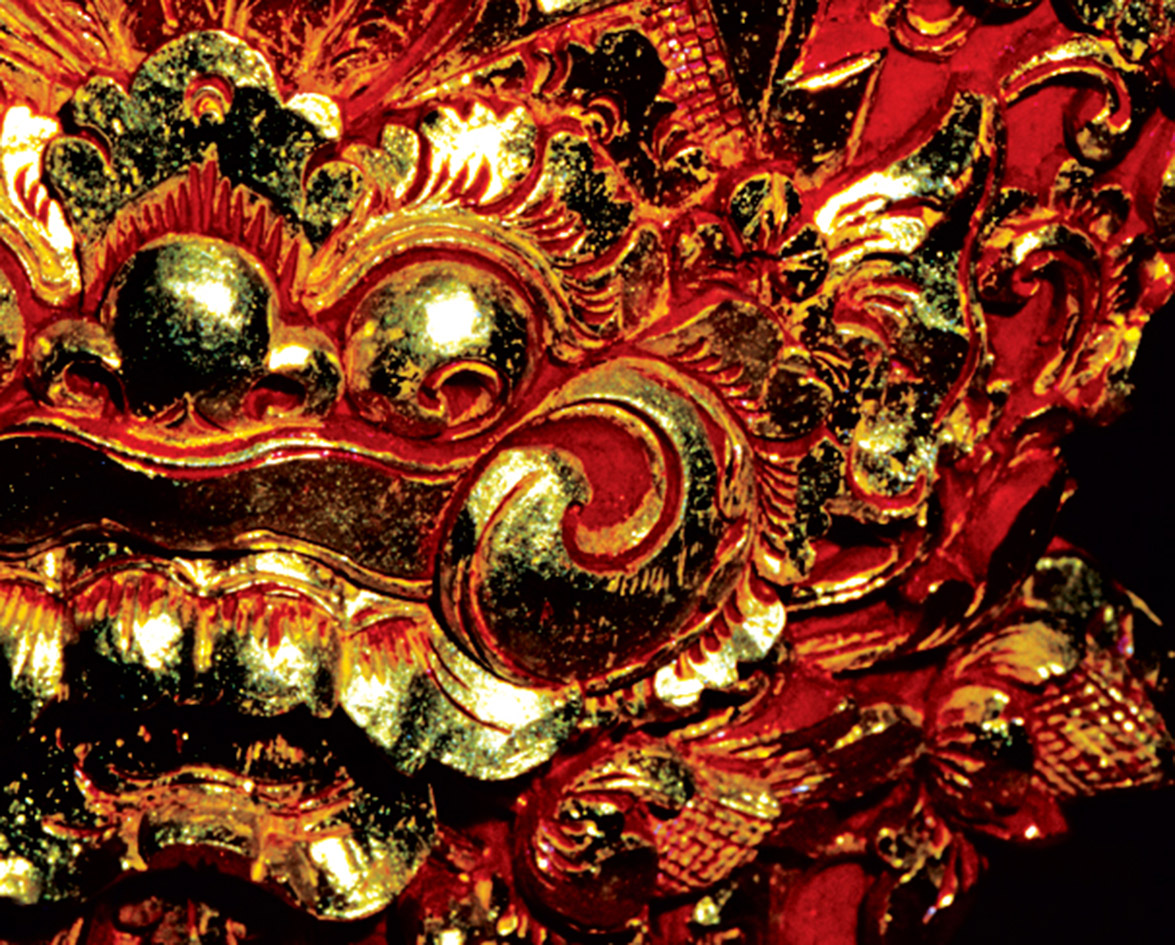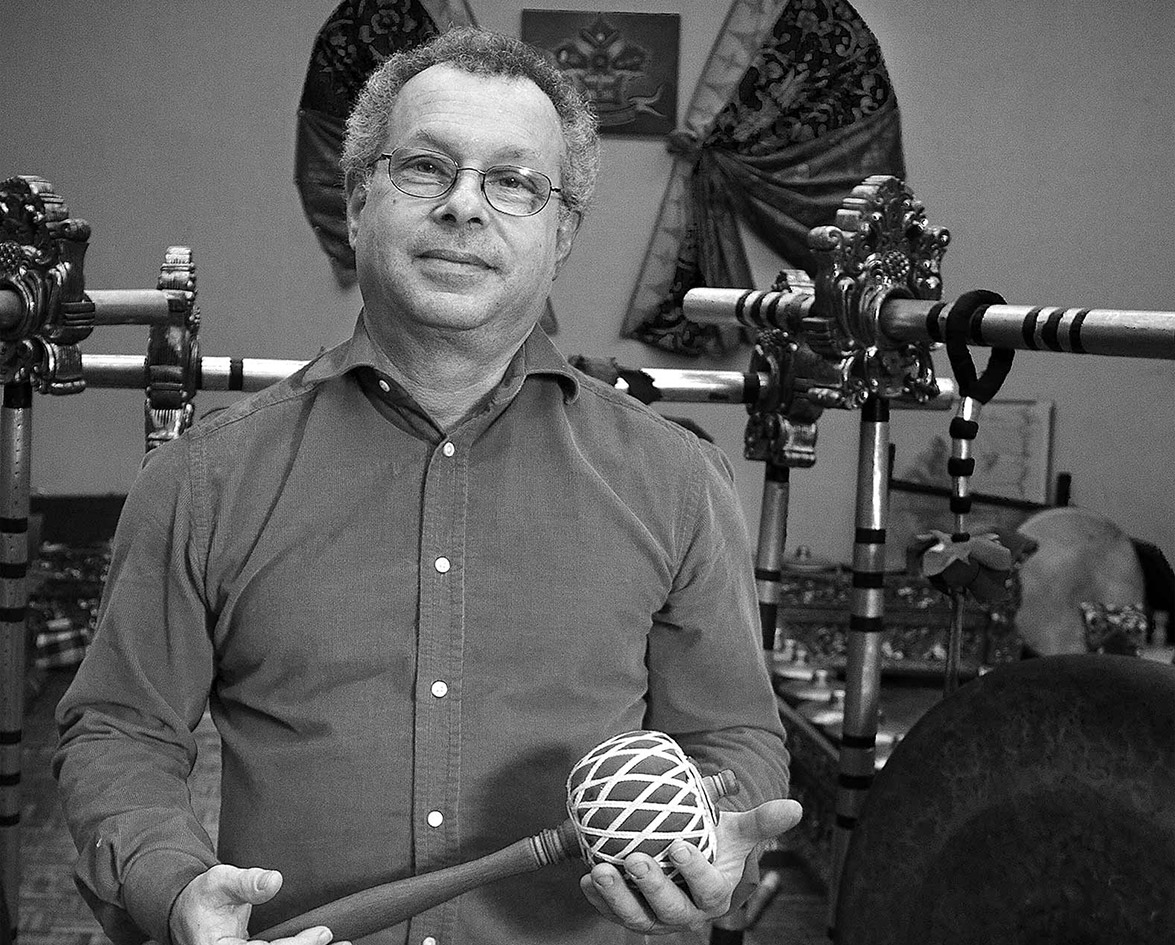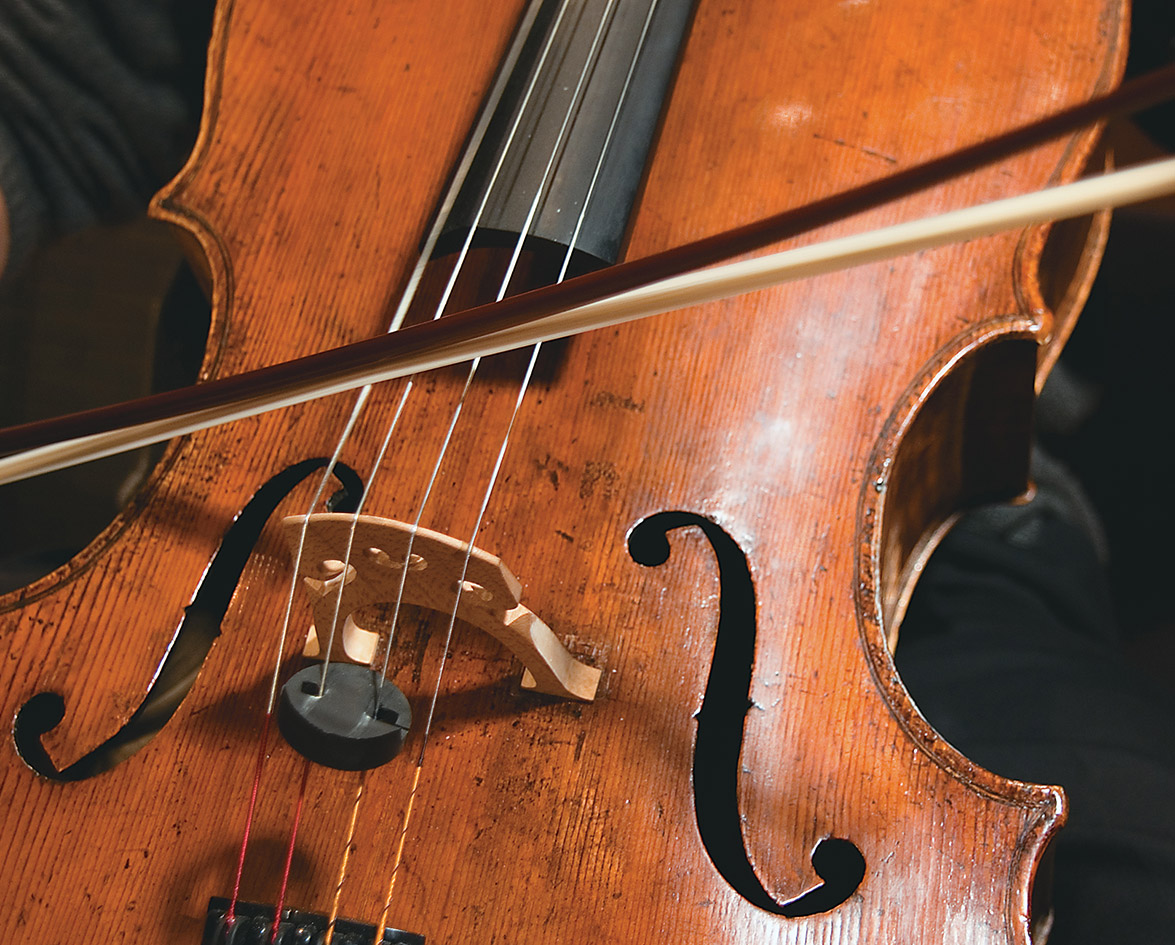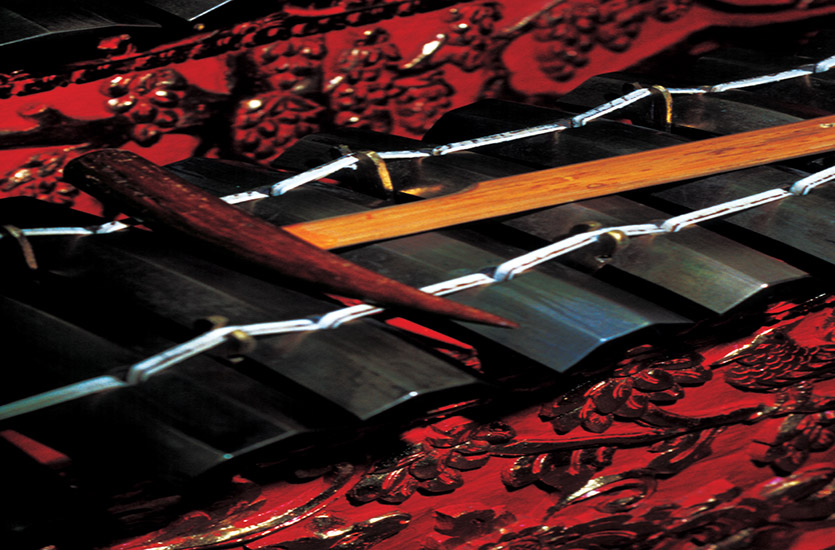
All around Vancouver, groups of musicians gather to practise and perform a traditional trance-like music. Seated on the floor, they strike gongs and other metal instruments creating intricately interwoven musical patterns. Gamelan, played in Indonesia in one form or another for about 1500 years, is a type of percussive orchestra consisting of different sized bronze gongs and instruments that often accompany dancers and shadow puppet plays. These instruments, called metallophones, are similar to western xylophones. Vancouver has a vibrant and varied gamelan community with three orchestras representing Balinese, Javanese and Sundanese gamelan, the three main gamelan styles of Indonesia.
One of the translations of gamel in Old Balinese is to hold, or come together as one. This sense of community is a vital part of gamelan structure. The entire set of instruments is viewed as one unit and musicians learn to play all parts. Even singers are viewed as instruments, since there are no soloists or conductors in a gamelan orchestra. Leaders, however, do have a subtle presence, helping indicate changes in musical cycles, or setting the tempo, but the musicians are all expected to pick up on their cues. Everyone works together to feel and produce the music in unison. “You need to be in tune with others. You cannot do your own thing; it just doesn’t work,” explains Audrey Foo, a member of the Vancouver Community Gamelan.
The Gamelan
A gamelan is built as a collection of instruments tuned to each other, but not in a conventional western way. Tuning differs from one set to another, even within a given style. For this reason you cannot take an instrument from one orchestra and use it in another unless it matches perfectly. Martin Gotfrit, the director of Simon Fraser University’s School for the Contemporary Arts explains: “The subtleties of tuning are what gives the instrument its fabulous timbre…The colour of the instrument is based on the tuning and how the various parts of it combine and shimmer. The sound has a kind of physical presence, it sparkles.”
The Vancouver Community Gamelan practise on a full sized Javanese court-style set called Gamelan Kyai Madu Sari, or The Venerable Essence of Honey. A Javanese set has two of each instrument, representing two different scales. These are not played at the same time. Gamelan Kyai Madu Sari consists of about 40 instruments housed in ornately carved, red and gold painted frames. The Indonesian Consulate donated this set to Simon Fraser University’s School for the Contemporary Arts after it was on display at Expo ’86.
The musicians play cyclical melodies and sing stories and proverbs in Javanese. Their hands move gently back and forth across the instruments striking keys with one hand and dampening notes with the other. The higher pitched instruments play faster than the lower ones, interlocking to produce soothing, meditative music.
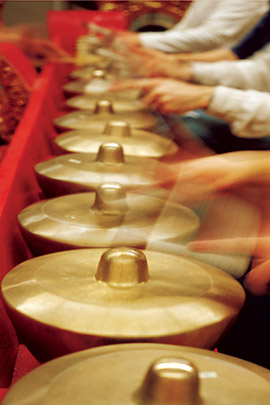
At the University of British Columbia, Sekaha Gong Gita Asmara, translated as the Gamelan Club of the Sound of Love, play a Balinese-style music that is fast, fiery and extremely powerful. The group consists of four musicians seated at a set of kettle-shaped gongs placed horizontally in a single row along a red and gold frame. As they perform, patterns of limbs and hammers move in unison across the frame, sometimes converging upon the centre, delighting the senses both visually and sonically with the rhythmic chime of the gongs. A Balinese gamelan has two of each instrument in the same scale, but one of each pair is tuned to a slightly higher pitch creating the shimmering sound distinctive to Balinese gamelan.
Jon Siddall is the director and one of the composers of Gamelan Si Pawit, a Sundanese (western Javanese) Degung orchestra. Siddall started the internationally renowned Evergreen Club in Toronto with a set he put together himself, using the bronze parts of a set from Indonesia and Canadian-made frames. The gamelan set, named Si Pawit, or The Beginning, is now in use by the Vancouver Community College music department for its advanced gamelan course. Set on smooth wood frames with a natural finish, the set looks markedly different from the instruments of the other two orchestras in Vancouver.
The music that streams from Si Pawit is a light and sweet-sounding Sundanese Degung style. It is comparable to a chamber music ensemble because there are only eight musicians. Sundanese Degung uses only one of the two scales used in the Javanese style, and the bonang, a set of small kettle-shaped gongs set horizontally on a wood frame, are smaller and have a different pitch than those found on a Javanese set. From their set, a large gong resonates intermittently while a flute floats gently over the chiming gongs and metallophones.
The Vancouver gamelan community provides a valuable opportunity for Indonesian musicians to share their culture with Canadians. Michael Tenzer, artistic director ofSekaha Gong Gita Asmara affirms, “Music is a form of intelligence. When you learn the music of another culture you are learning the most positive and beautiful aspects of that culture. People want that knowledge.”
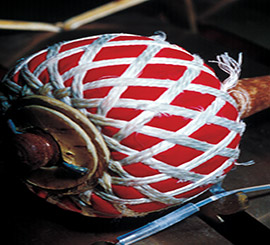
For many people, playing the gamelan is a deeply satisfying experience. For Siddall, it is a remedy for today’s hectic pace. “There’s something about playing the gamelan. You’re hitting these things so gently and they make these really beautiful sounds, and they look lovely—it always puts people in a good mood. There’s something about it…it’s rejuvenating.”





